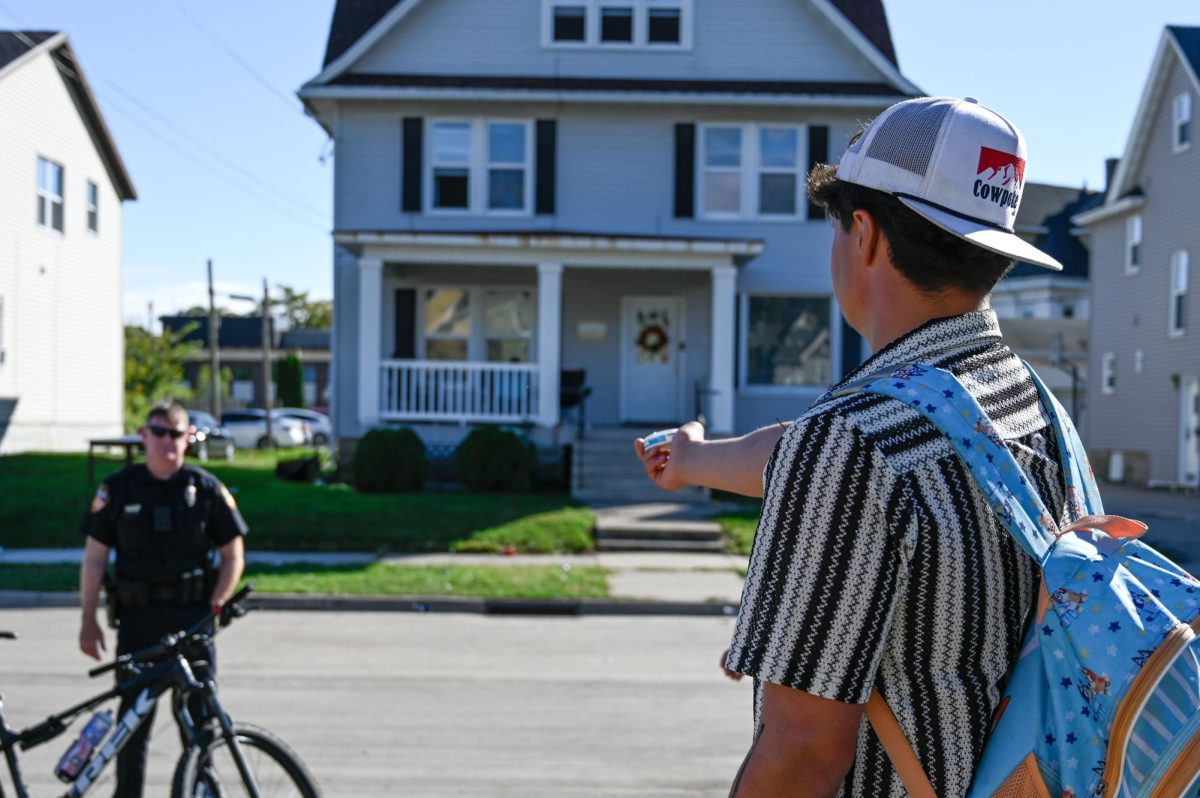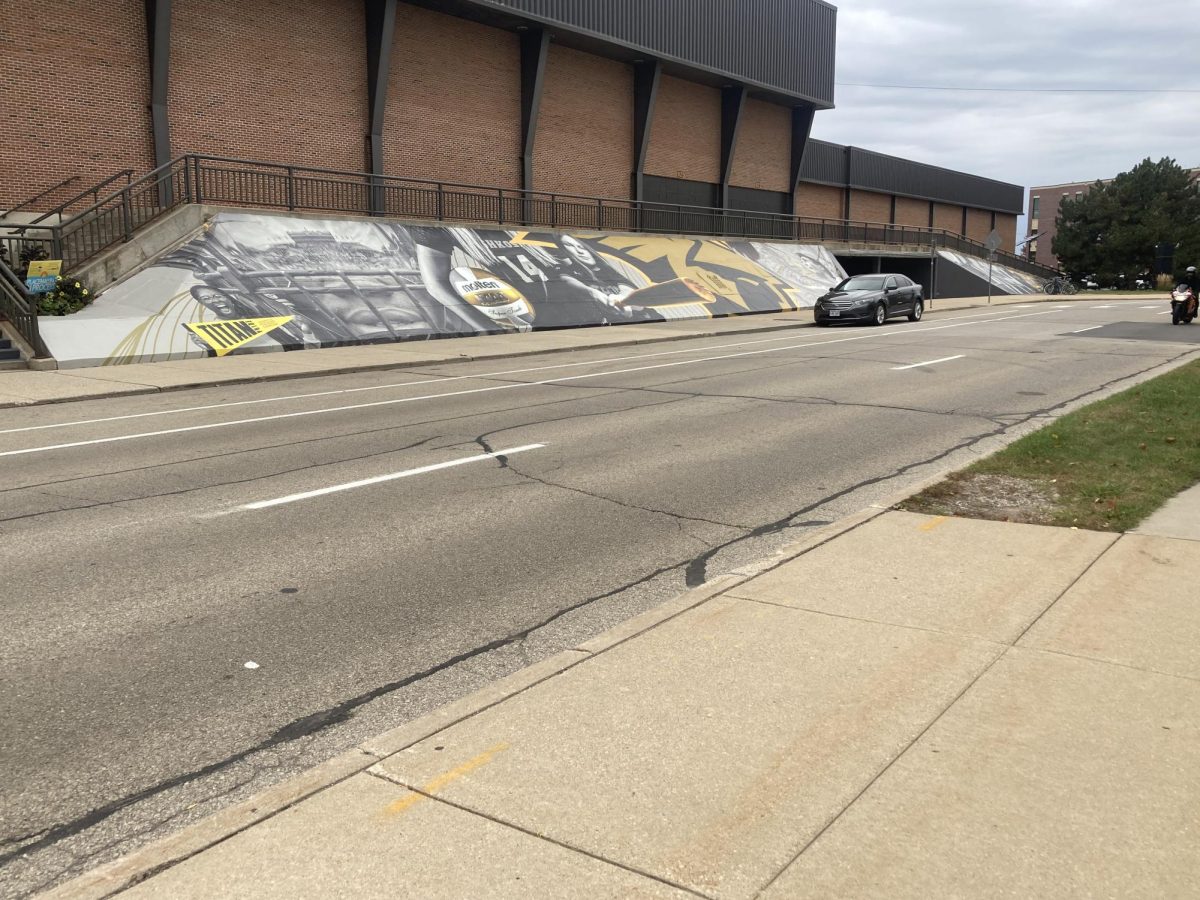The UW Oshkosh Titan Alert text system is set up to send notifications on safety and weather emergencies to anyone who signs up. On Feb. 6 a Titan Alert was sent over two hours after the incident occurred. UWO University Police Chief Kurt Leibold and Lieutenant Christopher Tarmann said it is important to first understand what exactly the Titan Alert system is and how it operates. According to Tarmann, the Titan Alert system is an efficient way to put information into the hands of students, especially through texting. It is a mass notification system that helps to put information into your hands as students very quickly, Tarmann said. It is a mechanism to get the word out. There are multiple avenues of that, first being texting. Tarmann said there is a potential negative feature to this part of the system; in order for students to receive these texts messages with important information, they must opt-in to the Titan Alert texting system. The downfall to [texting] though, and I think some students dont realize this, is that it is actually an opt-in system for texting, Tarmann said. That means that you dont get a text message unless you sign up to say, I want those. According to Tarmann there are avenues where the information is shared which is not on an opt-in basis. The rest of it [Titan Alert system] is opt-out, Tarmann said. So email, and if you follow the UWO Facebook page, or [the Campus Police] Facebook page, it goes to those avenues as well. Freshman Angie Vickman signed up for these text alerts and believes that life on campus is safe, but precautions are sometimes necessary. For the most part I think campus is safe, Vickman said. I make sure not to venture too far off campus by myself, and just knowing about the blue emergency lights everywhere makes me feel safer. Vickman said that a situation where an alert is sent out late might create unnecessary concern in some situatuons, but overall she feels like the system is a great way to get information to the students in a quick and easy manner. The text message we received on [Feb. 6], two and a half hours later, Im sure those people who the police were looking for were no longer in the area, so you may be creating controversy where there doesnt need to be, Vickman said. However, it does create more knowledge about what is going on and the more people are aware of it, the safer campus will be. Tarmann said the decision to send out alerts out is determined by examining the potential risk to the students living both on and near campus. The decision around sending out a Titan Alert is based on the risk to the campus population, Tarmann says. It is not necessarily something that could be potentially happening on campus. It could be happening near campus or where we feel like students frequent. It is based on the facts of whatever is going on in the realm of the area where we think there could be a risk to campus. According to Tarmann, communication and discussion between the campus police officers determines what the threat is and whether or not it will be handled in a timely manner. We always discuss, here is the situation [and] here is the potential risk. Do we have leads which will close this issue quickly or not? and then we determine if we need to send something out, Tarmann said. Tarmann said the decision-making process for sending out Titan Alerts takes time because they need to ensure that the information they are receiving is accurate before sending out a message. We know that oftentimes when information is coming to us that it is not one hundred percent accurate, Tarmann said. That is when we have the discussion [about sending out a Titan Alert]. We would rather err on the side of caution and get the information out as quick as we can. UWO junior Ben Shortess, who has lived near campus for the last three years, said that getting quicker response times for the Titan Alerts is an important part of ensuring that the students are informed of the situation when it is happening. Obviously they cant send out information right away thats not completely accurate, but they could send out some information just as a warning just so people know what is going on, Shortess said. Shortess said an initial warning should be followed by another alert which gives students more in-depth details about the incident and what to look for going forward. A few hours after that first email is sent out, they should send another update which actually has details that individuals need to know, Shortess said. This way the first alert lets students know to avoid the area and when they have more information they can release more specific details about what is happening in the second alert. According to Shortess, if the students knew that all of the initial Titan Alerts were going to be followed up with another more detailed one, the students would actually read them both. If it was made clear that students were going to receive two alerts, people would know that if there is more information, a second alert is coming, Shortess said. With expediency and the quick availability of information being at the forefront of the advantages for this Titan Alert system, Leibold said why the Titan Alert on Feb. 6 was sent out hours after the incident took place. This issue of that timeframe was not about issues with the Titan Alert; that [issue] was with communications between [Oshkosh Police Department] and us, Leibold said. Thats where the delay came in. Leibold said that the Oshkosh Police and the University Police have different priorities and missions, which can sometimes lead to a need for more information sharing between the two departments. We look at things differently, Leibold said. University polices main concern will always be campus safety. Our number one concern and priority will always be our students, faculty, and visitors here. The Oshkosh Police Department has a different mission and they dont always see things as urgent as we do. Im not knocking them, it is just a different perspective. Leibold also went on to say that there have been talks between the University Police and the Oshkosh Police to make these communications quicker, which would allow the UP to get accurate information to students. We have already talked with them about how we can do better to share information so we can get these alerts out faster, Leibold said. The problem is Titan Alerts dont happen very often, and we realize that we have to tighten things up so we can have a smoother process in the future. Tarmann agreed with Leibold, saying that the time between University Police receiving the message and it being relayed to the students was very quick during this last incident. In the timeliness of when the information was received, the message to the campus was very quick, but it didnt look that way on the back side, Tarmann said. Tarmann said in the event of a high risk situation, the alerts will be sent out extremely quickly. In the moment where there is a high risk situation, not that this wasnt a high risk situation, but for any ongoing high risk situations, you are going to get [Titan Alert] quick because everyone in the city is going to know the urgency of the circumstance, Tarmann said. Vice Chancellor of Integrated Marketing Communications Jamie Ceman also discussed the Titan Alert system and the response time between incident and student notification. We work really closely with the University Police, but they are really the first line of communication if there is anything going on that they feel an alert needs to go out on campus, Ceman said. They need to be as responsive as possible, as quickly as possible, so they have the access to immediately send it out and make the call. Ceman also said that if the Campus Police are dealing with an incident which needs their immediate attention, the University can also send out the alerts. If for some reason they are dealing with the incident and cant get anything out, they call us, tell us what is going on and we get the message out, Ceman said. Ceman went on to talk about some of the difficulties with the text messages and its current opt-in status as part of the Titan Alert system. I think that well always be limited when it comes to text messaging and character count when we send those out, Ceman said. The only thing which is optional is this text message, which we talk about whether or not we go opt-out [in the future]. Ceman pointed out Titan Alerts many positive aspects as well, including its ability to reach out to many different media outlets simultaneously. What is actually really nice about the Titan Alert system itself is that when you are actually in the system you are sending all of those messages at the same time, Ceman said. So you are creating a text message, a Facebook post, a Twitter post and an email all at the same time, all within the same system. So with one click then everything goes out at once. So the hope is that with all four of those channels going out at the same instant, youre going to get it in one of those ways. In response to the lag in the Titan Alert last Saturday, Ceman said that there is always information to be gained, especially if the investigation is not closed. Part of it involves the question of do you have any additional information? Ceman said. While maybe there is no longer an urgent danger, there is always the information aspect of it. Having sat in some of the conversations when those investigations are going on, there is a lot more going on than people really understand, so they [University Police] need to decide in the moment why they need to get that communication out. Ceman and the UP encouraged students to sign up for the Titan Alert text messages and always take the appropriate precautions that are outlined in them. Text messaging is the most instant way that you [students] are going to get any information from us, Ceman said. If there is any immediate danger to a student, faculty, or staff that is going to be the best way to get that information. We do our best to get it across as many channels as we can, as quickly as we can, but the text message is going to be the most effective way. The responsibility lies with the student to work with their professors regarding absences if they feel their safety is at risk, Ceman said. Schwister said the University works hard to keep a safe and clean campus for its students and faculty. Our facilities department tries its utmost to clean up snow during and after a snowstorm, but with a campus our size, they might get to some areas later than the others, Schwister said. Mack said UWO typically has around 12 employees working on the sidewalks and parking lots, including three to seven students who help with snow removal after every storm. Currently, the grounds department is down four employees, which interferes with snow and ice removal from some areas of campus. This year, because of the amount of a couple snowfalls and the fact that my department is currently down four positions due to two retirements and two other openings, we called on facilities management to help out, Mack said. Mack said depending on the predicted amount of snowfall, the staff will start snow and ice removal anywhere from midnight to 4 a.m. She said for unpredicted snowfalls, the staff is contacted at night to talk about the next step. I use weather underground and the National Weather Service to start things out, Mack said. If snow is predicted and is going to be substantial then I look to the University Police for their updates on when it will start and the predicted amounts. According to Mack there are certain areas that have priority to be cleared of snow. Sidewalks and a designated handicap route are top priority, Mack said. The lowest priority areas are the lots where students park long term. With that being said we typically have everything plowed by at least 9 a.m. Mack said the grounds department receives help from the custodial staff during snowstorms. Entrances to all buildings are taken care of by custodial staff and we are very appreciative of all the support they provide, Mack said.
Categories:
UWO officials look to improve Titan Alert system
February 18, 2016
0








